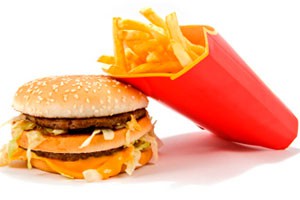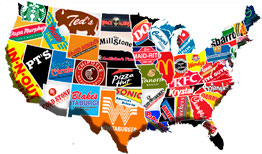 The fast food industry generates about $165 billion in revenue annually, based on 2011 market research by IBISWorld. The research also indicates that about 184,200 fast food businesses operate in the United States. Meal prices affect consumers’ restaurant choices in some economic climates. However, consumers’ desire for more variety and healthier foods at restaurants sometimes outweigh their concerns about costs.
The fast food industry generates about $165 billion in revenue annually, based on 2011 market research by IBISWorld. The research also indicates that about 184,200 fast food businesses operate in the United States. Meal prices affect consumers’ restaurant choices in some economic climates. However, consumers’ desire for more variety and healthier foods at restaurants sometimes outweigh their concerns about costs.
Economic Downturns
Fast food restaurants tend to fare better during an economic downturn than pricier restaurants do. Consumers living on a tight budget in a bad economy often turn to fast food chains for inexpensive meals, according to “The Economist” magazine. However, the magazine notes that a long-term recession makes even fast food restaurants vulnerable to profit losses if consumers eat at home more often to save money. In such cases, big restaurant chains may respond by cutting their prices further and increasing advertising to lure consumers back to their restaurants. Smaller chains may not have the budgets to do the same to protect their profits.
Mergers
Fast food chains sometimes merge during a recession to grab a bigger share of the market and increase profits. Arby’s and Wendy’s merged in 2008 as U.S. unemployment rates were rising and fewer consumers were dining out. The merger expanded market share for Arby’s and Wendy’s, because it created the third-largest fast food chain in the United States. Mergers also can help fast food restaurants increase their customer base and revenue by expanding their hours of operation. For example, a restaurant chain that doesn’t serve breakfast may merge with a chain that does.
Economic Recovery
Low meal prices are less of a concern for some consumers as a slow economy begins to rebound. IBISWorld predicts fast food restaurants need to expand their menus when price isn’t a top concern for consumers. “QSR” magazine reports 2011 sales for McDonald’s outpaced the company’s 2009 sales by $1.5 billion after the chain included fruit smoothies and other new items on its menu. Consumer demand for healthy meals is causing McDonald’s and other fast food restaurants to add fruits and vegetables to their menus, according to "QSR."
Commodity Prices
Low prices on meats, vegetables and other commodities help fast food restaurants cut meal prices without losing profits. However, cutting prices to attract customers can backfire when cutbacks exceed food and production costs. For example, “The Economist” notes some Burger King franchise owners sued the company in 2009, because a corporate promotion required franchisees to sell a double cheeseburger for $1 that cost a $1.10 to make. The court ruled in Burger King's favor.
By: Frances Burks








Leave a comment